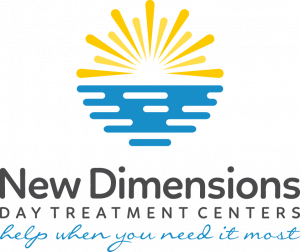The True Cost of Accidents in the Workplace
In today's workplace, it is important to recognize and address the consequences of employees dealing with mental health or addiction issues.
HOUSTON, TEXAS, UNITED STATES, July 27, 2023/EINPresswire.com/ -- In today's workplace, it is becoming increasingly important to recognize and address the consequences of employees dealing with mental health or addiction issues. Creating an environment where employees feel comfortable bringing their whole selves to work can positively impact their well-being, job satisfaction, and overall productivity.
Workplace accidents can impact the individuals involved, their co-workers, family members, and the company. From financial burdens to emotional and physical trauma, these incidents can have a profound effect. Understanding the true cost of workplace accidents is essential for companies to prioritize safety measures, provide support for injured employees, and mitigate future risks.
The National Safety Council notes, “The total cost of work injuries in 2021 was $167.0 billion. This figure includes wage and productivity losses of $47.4 billion, medical expenses of $36.6 billion, and administrative expenses of $57.5 billion. This total also includes employers’ uninsured costs of $13.8 billion, including the value of time lost by workers other than those with disabling injuries who are directly or indirectly involved in injuries, and the cost of time required to investigate injuries, write up injury reports, and so forth. The total also includes damage to motor vehicles in work-related injuries of $5.4 billion and fire losses of $6.3 billion.
Cost per medically consulted injury in 2021 was $42,000, while the cost per death was $1,340,000. These figures include estimates of wage losses, medical expenses, administrative expenses, and employer costs, but exclude property damage costs except to motor vehicles.”
There are direct and indirect expenses that occur with a workplace accident. Direct expenses include employee injury, equipment, property, legal expenses, and an increase in worker’s compensation insurance. The more claims you have, and the higher the cost, the more likely your insurer will raise your workers' comp premiums. The loss of production time is the main source of indirect costs. This could include worksite cleanup, workers’ being less productive, and OSHA involvement or sanctions.
The effect a workplace incident has on the business's reputation, both internally and externally, is another significant indirect cost. What do workers believe about the company’s policy on safety and security? A company’s safety record may impact recruitment of employees, securing new vendors, and impact the fiscal stability of the organization.
Mental health or addiction issues can pose safety risks for all types of industry. Impaired judgment, decreased focus, and substance abuse can compromise decision-making abilities and reaction times, potentially leading to accidents or errors. Depression, anxiety, substance abuse, and other conditions can diminish concentration, motivation, and overall productivity. Untreated mental health issues may result in absenteeism, presenteeism (being physically present but not fully engaged), and an overall decline in job performance.
When employees do not feel comfortable discussing their mental health or addiction issues in their work environment through an Employee Assistance Program (EAP) or other resource, a culture of silence or stigma can emerge. This can create a hostile or unsupportive work environment, leading to decreased morale, reduced team cohesion, and increased interpersonal conflicts. A caring and cohesive workplace culture is created by addressing mental health in the workplace and fostering an inclusive and supportive environment where employees are encouraged to share their experiences.
While EAPs provide a valuable initial resource for employees seeking assistance, they often have a limited number of visits covered. Another service EAP provides is to assess the employees’ needs and refer them to appropriate treatment that is covered by their insurance. Treatment providers covered by insurance include individual therapists, intensive outpatient treatment programs, and inpatient hospitalization. If the employee will benefit from once-a-week counseling, an individual therapist is the best recommendation. If the employee needs more support than once-a-week therapy, intensive outpatient treatment (IOP) programs provide structured day treatment with education on coping skills, anger management, and medication management. Intensive outpatient programs include psychiatric care so that a psychiatrist or nurse practitioner can assess and prescribe medication in conjunction with the therapies provided in the IOP. When employees are really struggling with suicidal harm or severe drug abuse an inpatient hospital setting is the best choice to stabilize the employee’s mental health. An EAP counselor can make the best determination during the initial EAP sessions for the level of care that is best for the employee.
A compassionate leadership culture starts at the top and works its ways down through the ranks of employees. Appropriate training will equip managers and supervisors with the necessary skills to recognize signs of mental health or addiction issues, provide appropriate support, and refer employees to available mental health resources. Proactively addressing and supporting employees with mental health issues can help mitigate safety risks and ensure a safer work environment for all.
About New Dimensions Day Treatment Centers:
New Dimensions Day Treatment Centers can be an option for employees and EAP programs in providing longer-term support. The organization treats adults and adolescents with mental health and/or substance abuse issues by providing a multi-disciplinary approach to outpatient mental health counseling and substance abuse services. MH Thrive is a treatment option that provides in person counseling and telehealth therapy services and online treatment programs for individuals who reside within the state of Texas. Since 1991, New Dimensions has helped individuals and families heal from the pain that is caused by depression, anxiety, trauma, addictions, and other emotional or behavioral problems. Give us a call: 1-800-685-9796 or visit the website: www.nddtreatment.com. We can help!
Randy Brazzel
New Dimensions Day Treatment Centers, LP
+1 800-685-9796 ext. 1309
email us here
Visit us on social media:
Facebook
Twitter
LinkedIn
Legal Disclaimer:
EIN Presswire provides this news content "as is" without warranty of any kind. We do not accept any responsibility or liability for the accuracy, content, images, videos, licenses, completeness, legality, or reliability of the information contained in this article. If you have any complaints or copyright issues related to this article, kindly contact the author above.


